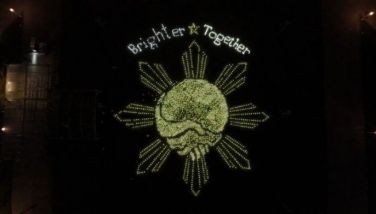SOS: Saving our seas by 2030

Stakeholders, including representatives from the Department of Foreign Affairs, the Department of Environment and Natural Resources, the Philippine Coast Guard, the diplomatic corps, and experts, gathered at the Strengthening Collaboration for Sustainable Ocean Biodiversity Conservation hybrid forum organized by the Embassy of France in the Philippines and Stratbase ADR Institute (ADRi) on 16 October in anticipation of the 3rd UN Ocean Conference (UNOC) that will be held in Nice, France in June 2025.
H.E. Marie Fontanel, Ambassador of France to the Philippines opened the forum while DENR Undersecretary Ernesto D. Adobo, Jr. delivered the keynote message.
The forum was conducted a week after the 2024 Taiwan International Ocean Conference that was participated in by 10 countries, including the Philippines, and with the author serving as a speaker on behalf of Stratbase ADRi.
It also coincided with the Philippines’ hosting of the Asia-Pacific Ministerial Conference, which monitors, reviews and fosters cooperation on the implementation of the Sendai Framework for Disaster Risk Reduction 2015-2030 at the regional level.
With only a little over six months from the 3rd UNOC and barely six years for the Sustainable Development Goals (SGDs), as well the plans and frameworks under multilateral environmental agreements (MEAs) to come into fruition, the forum emphasized the need for collective and sustainable marine conservation efforts if we are to address the triple planetary crises of climate change, biodiversity loss and pollution.
Undoubtedly, 2030 will decide whether humanity has lived up to its commitments under the SDGs, the Sharm el Sheikh Implementation Plan, the Kunming-Montreal Global Biodiversity Framework (Biodiversity Plan), the Sendai Framework, and the objectives of the UN Decade on Ecosystem Restoration, as well as on Ocean Science for Sustainable Development.
Considering the systemic nature and the extent of the environmental issues that the world is grappling with, the 2030 targets of these plans and frameworks are ambitious yet realistic. Equally importantly, they are interrelated.
The various MEAs and the corresponding 2030 commitments under them seek to, among others, restore and protect ecological connectivity that is crucial to a thriving planet that will continue to provide nature’s benefits that the world needs for its survival, well-being, cultural assets, and prosperity.
Just as these ecosystems are connected, the challenges that require urgent action are likewise intertwined: climate change and its impacts, including disasters such as storm surges, cannot be adequately addressed if biodiversity loss and pollution remain pervasive.
Climate change and pollution, in turn, are two of the five direct drivers of biodiversity loss. It is unsurprising that the solutions to these monumental problems are also complementary and the efforts to implement them need to be collaborative. Indeed, the buzzword of this decade is synergy in order for us live in harmony with nature by 2050 as envisioned by the Biodiversity Plan.
As the DENR shared during the forum, it is finalizing the Philippine Biodiversity Strategies and Action Plan consistent with the 4 goals and 23 targets of the Biodiversity Plan, following a series of nationwide consultations that involved diverse stakeholders, including indigenous peoples and local communities who are at the forefront of conservation efforts and often the most vulnerable to climate change impacts.
Its successful operationalization will not depend on the DENR alone: it will require a whole-of-government and society approach and the support of partners for funding, capacity enhancement, and technology transfer.
This approach is likewise pivotal for the intended establishment of the DENR Marine Stations across the country, which will require collaboration among government agencies, industry, scientists, and other stakeholders to enhance research and evidence-based policymaking and implementation.
At the regional level, the ASEAN Centre for Biodiversity (ACB), the only ASEAN center for excellence that hosted in the Philippines thus far, is facilitating the concerted efforts of the ASEAN Member States.
With the support of the GEF and in collaboration with the UNDP, the ACB is implementing the ASEAN Effectively Managing Networks of Marine Protected Areas in Large Marine Ecosystems in the ASEAN Region project, which focuses on the Bay of Bengal, the South China Sea, the Sulu-Celebes Sea, and the Indonesia Seas.
Moreover, 12 marine protected areas in the region, including Tubbataha Reefs Natural Park, Turtle Islands Wildlife Sanctuary, and Apo Reef Natural Park in the Philippines, have been declared as ASEAN Heritage Parks.
Highlighting cooperation in the Asia-Pacific Region at the forum was Jevon Imechedong Sato from the Ministry of Agriculture, Fisheries and the Environment of the Republic of Palau. Sato provided insights on the Palau National Marine Sanctuary, where 80% of the country’s exclusive economic zone is under strict protection.
She also shared progress on the ongoing Micronesia Challenge, a commitment by the Federated States of Micronesia, Palau, the Marshall Islands, Guam, and the Northern Marianas Islands, to effectively manage 30% terrestrial and 50% marine resources in Micronesia.
Palau’s political will to upscale its marine biodiversity conservation efforts is also manifested by its distinction of being the first State Party to the UN Agreement on Biodiversity Beyond National Jurisdiction.
The world failed to accomplish the Strategic Plan for Biodiversity 2011-2020 and has very little time to achieve the goals and targets of its successor, the Biodiversity Plan, which was adopted at the 15th Meeting of the Conference of the Parties to the Convention on Biological Diversity.
This week, at the 16th Meeting in Cali, Colombia, the world is gathering to determine if States and stakeholders are making waves in the Biodiversity Plan’s implementation.
As an archipelago that heavily relies on coastal and marine ecosystems and resources for its economy, food and water security, peacemaking, and protection from disasters, the Philippines has so much to lose from the continued degradation of its oceans and even more to gain from their restoration, conservation and effective management.
We have reached the point of SOS – sink or swim – and a buoy that will help keep us afloat are sustainable collaboration at the local, regional, and international levels as we respond to the global call for SOS, save our seas by 2030.
Mary Kristerie A. Baleva is a lawyer with a master's degree and a PhD in international human rights law, who served as the Director for International Affairs and Treaties of the ASEAN Centre for Biodiversity, and the DENR's OIC Assistant Secretary for Legal and Legislative Affairs. She is also a non-resident fellow of think tank Stratbase ADR Institute.
- Latest























